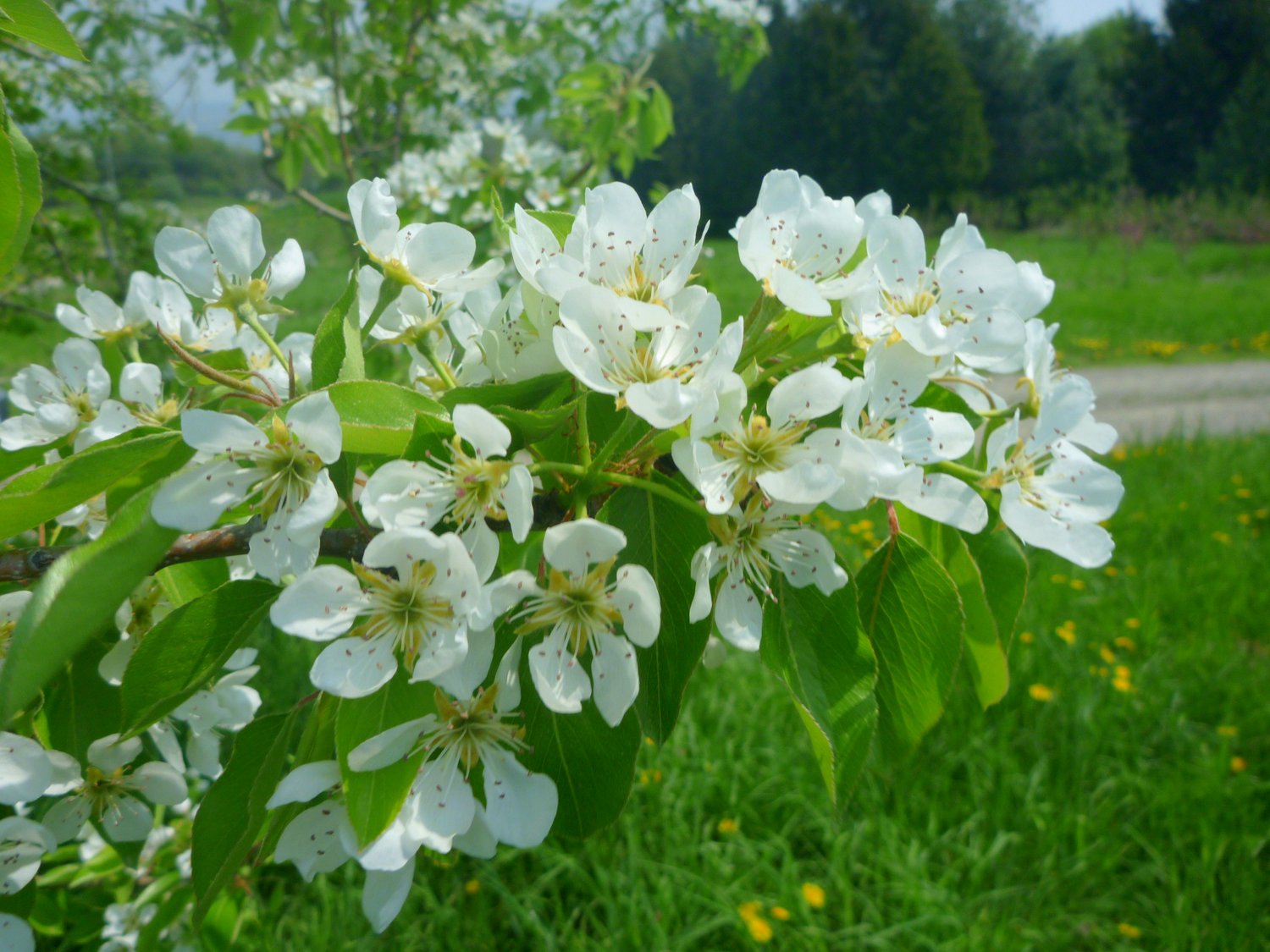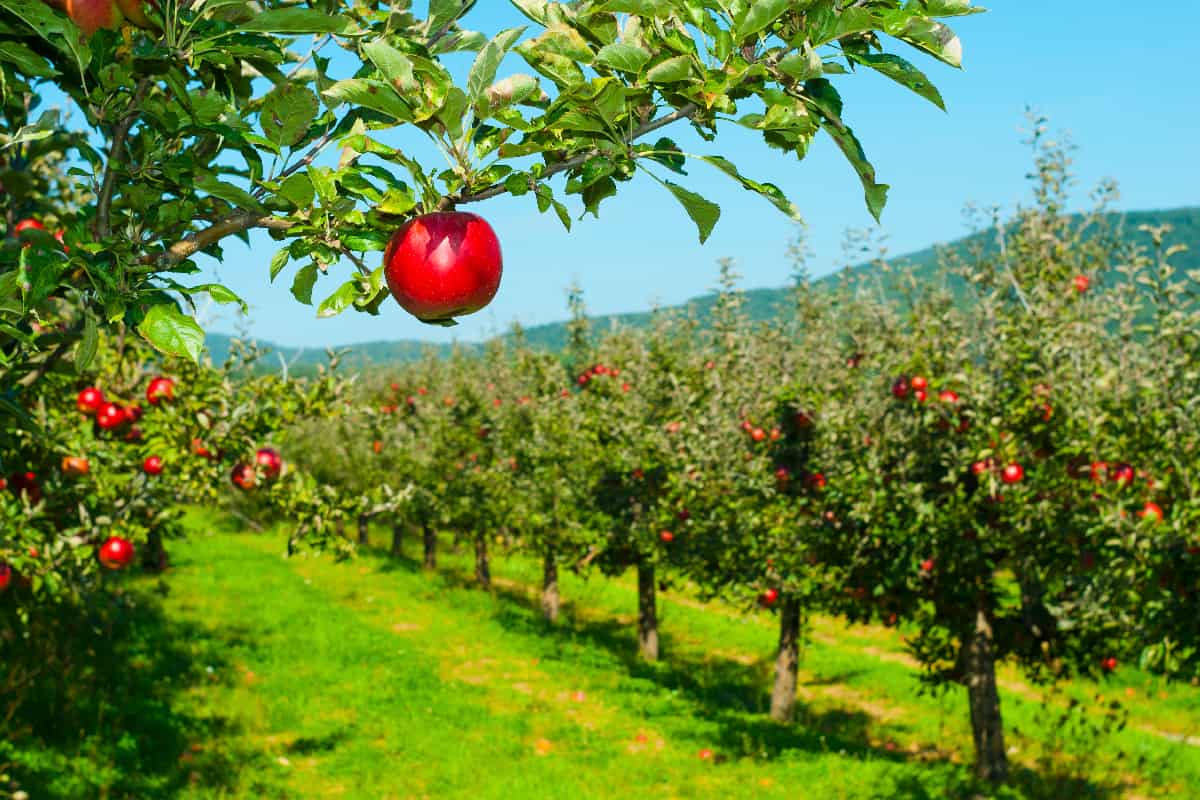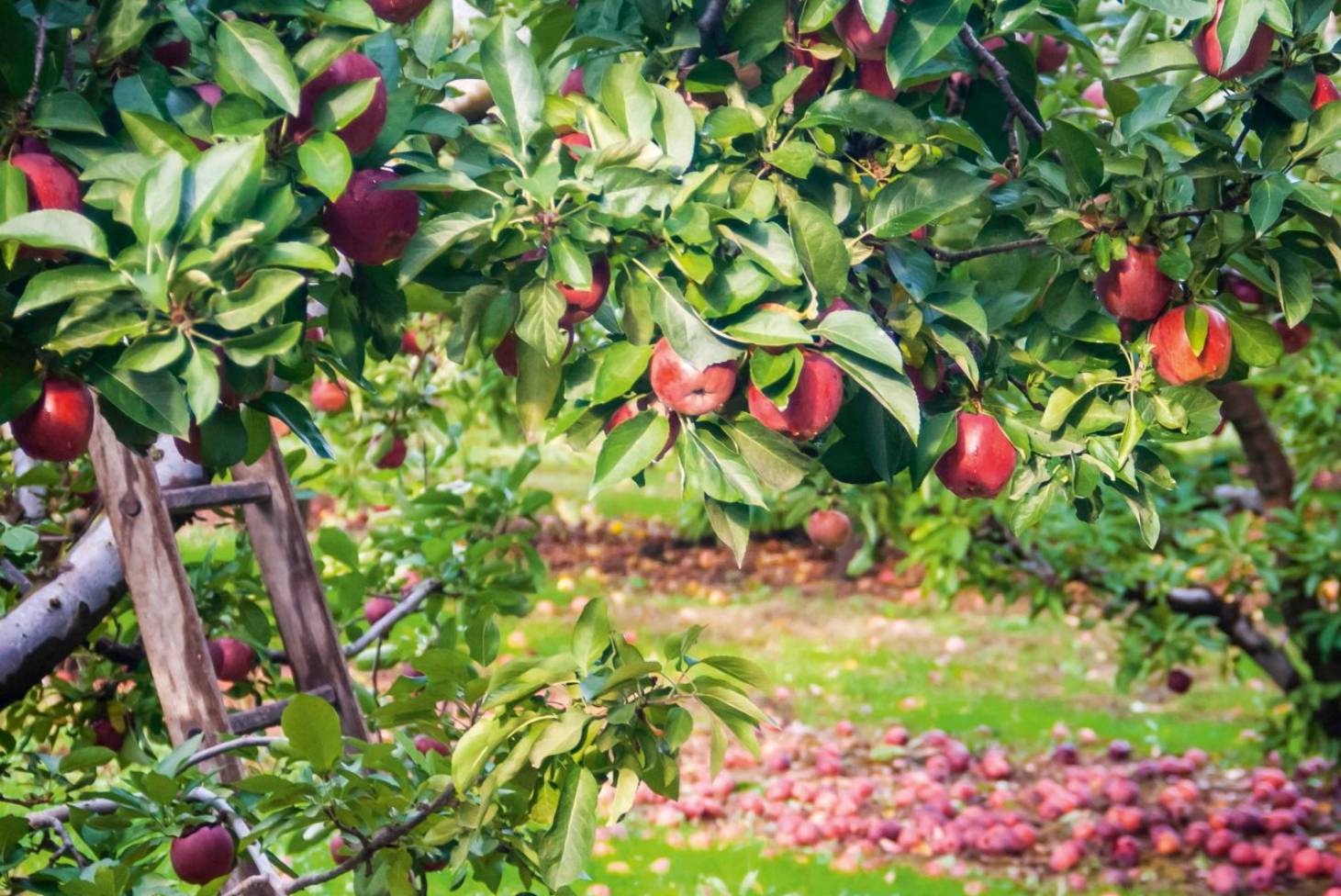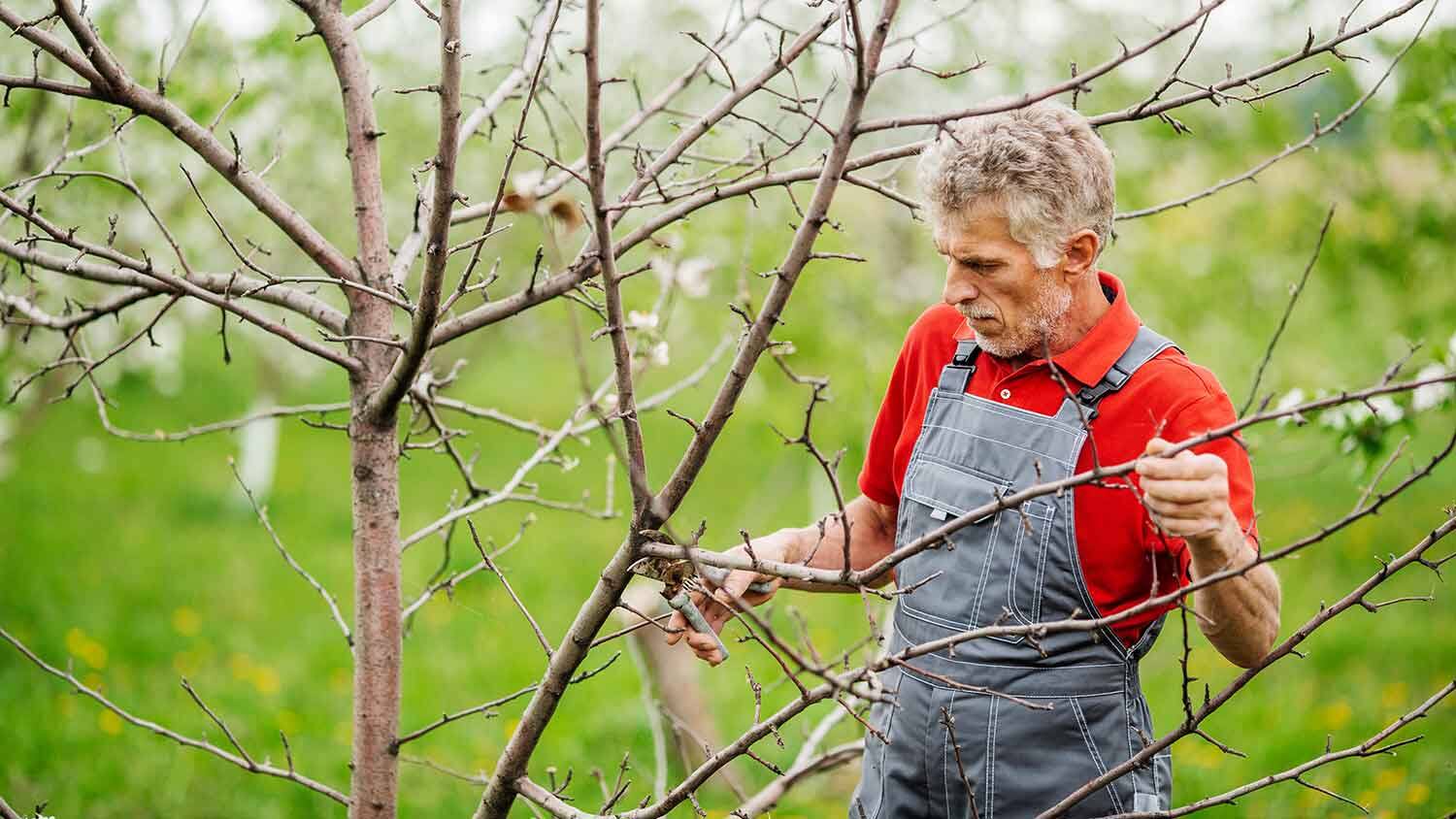Home>Gardening Techniques>Plant Care>How To Fertilize Apple Trees
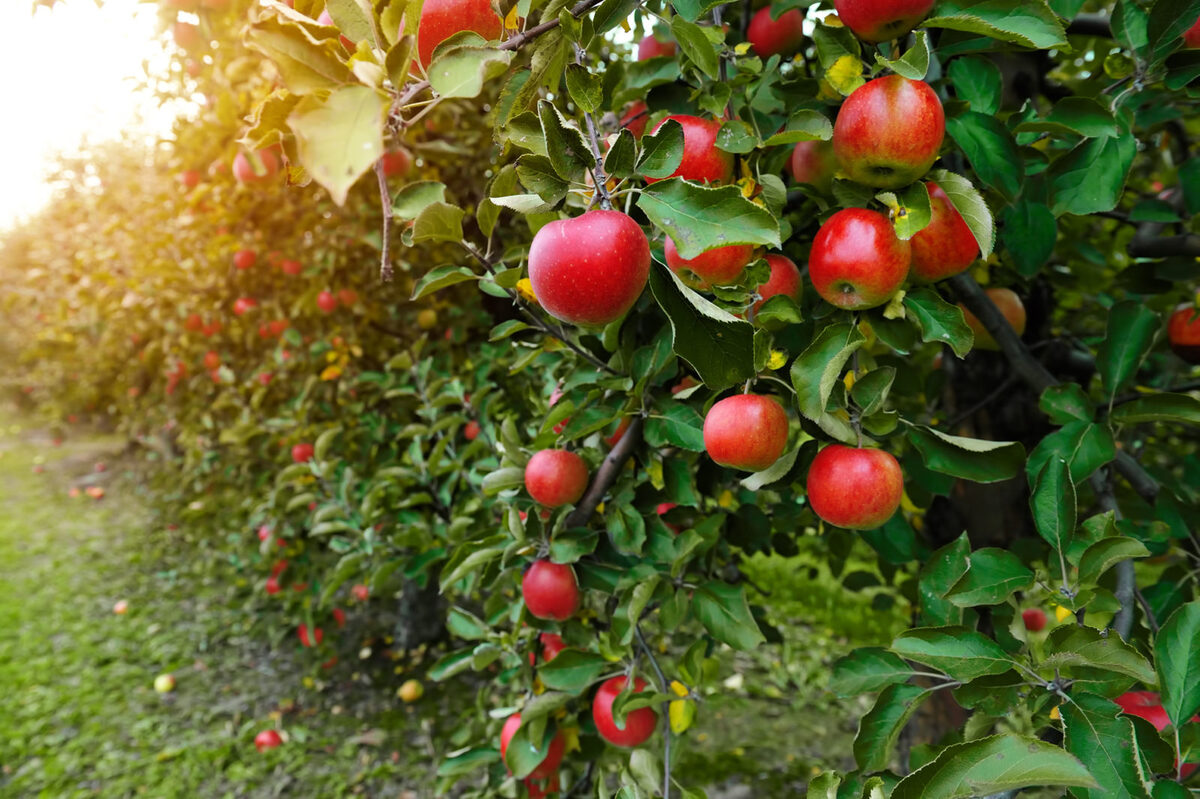

Plant Care
How To Fertilize Apple Trees
Published: October 31, 2023
Learn the best plant care practices for fertilizing apple trees and ensure their healthy growth with our step-by-step guide.
(Many of the links in this article redirect to a specific reviewed product. Your purchase of these products through affiliate links helps to generate commission for Chicagolandgardening.com, at no extra cost. Learn more)
Table of Contents
Introduction
Welcome to the wonderful world of apple tree care! If you’re lucky enough to have these beautiful trees in your garden, you know just how rewarding it can be to watch them grow and bear delicious fruits. However, to ensure your apple trees thrive and produce a bountiful harvest, proper care is essential.
One crucial aspect of apple tree care is fertilization. Fertilizing your apple trees provides them with the necessary nutrients to support healthy growth, vibrant foliage, and abundant fruiting. In this article, we will guide you through the process of fertilizing apple trees, from understanding their nutritional needs to choosing the right fertilizer and applying it correctly.
By taking the time to learn about and implement proper fertilization techniques, you can significantly improve the health and productivity of your apple trees. Whether you’re a novice gardener or an experienced plant enthusiast, this article will equip you with the knowledge and tools to nurture your apple trees and enjoy the fruits of your labor.
So, let’s dive in and discover how to give your apple trees the best care possible!
Understanding Apple Trees and Their Nutritional Needs
Before diving into the world of fertilization, it’s crucial to have a solid understanding of the nutritional needs of apple trees. Like any living organism, apple trees require specific nutrients to grow, develop, and produce healthy fruits.
The three primary macronutrients that apple trees require are nitrogen (N), phosphorus (P), and potassium (K). These nutrients play a crucial role in various aspects of tree development and fruit production.
- Nitrogen (N): Nitrogen is responsible for promoting vigorous growth, green foliage, and overall plant health. It plays a vital role in leaf development and chlorophyll synthesis, ensuring efficient photosynthesis. Adequate nitrogen levels are crucial during the early stages of apple tree growth.
- Phosphorus (P): Phosphorus is essential for root development, flower formation, and fruit production. It aids in the transfer of energy throughout the plant, promoting strong root systems and efficient nutrient uptake. Phosphorus is particularly important during the flowering and fruiting stages of apple tree growth.
- Potassium (K): Potassium is vital for overall tree health, disease resistance, and fruit quality. It aids in the transportation of water and nutrients within the plant, improving drought tolerance and enhancing fruit flavor and color.
In addition to these macronutrients, apple trees also require micronutrients such as calcium, magnesium, iron, and zinc in smaller quantities. These micronutrients play essential roles in enzyme activation, cell division, and other biochemical processes that promote healthy tree growth.
It’s important to note that the nutritional needs of apple trees may vary depending on factors such as soil conditions, climate, tree age, and cultivar. Conducting a soil test can provide valuable insights into the nutrient deficiencies or imbalances specific to your apple trees, allowing you to tailor your fertilization approach accordingly.
With a solid understanding of apple tree nutritional needs, you will be better equipped to select the appropriate fertilizer and ensure your trees receive optimal nourishment throughout their growth cycle. In the next section, we will explore the different types of fertilizers available and how to choose the right one for your apple trees.
Choosing the Right Fertilizer for Apple Trees
Choosing the right fertilizer is critical to providing your apple trees with the balanced nutrition they need for healthy growth and abundant fruit production. There are various types of fertilizers available, each with its own composition and nutrient content. Here are some factors to consider when selecting a fertilizer for your apple trees:
- Nutrient Content: Look for a fertilizer that has a balanced ratio of nitrogen (N), phosphorus (P), and potassium (K). For apple trees, a general recommendation is to use a fertilizer with an NPK ratio of 10-10-10 or 12-12-12. This balanced ratio ensures that the tree receives a sufficient supply of all essential nutrients.
- Solubility: Fertilizers come in different forms, such as granular, liquid, or water-soluble crystals. Granular fertilizers are commonly used for apple trees as they provide a slow-release of nutrients. However, liquid fertilizers can be more quickly absorbed by the roots, making them a good choice for young trees or trees in need of immediate nutrition.
- Organic vs. Synthetic: Consider whether you prefer to use organic or synthetic fertilizers. Organic fertilizers are derived from natural sources and are generally slow-release, providing a gradual and long-lasting nutrient supply. Synthetic fertilizers, on the other hand, are manufactured and typically provide a more immediate nutrient boost.
- Micronutrients: In addition to the macronutrients (N, P, K), check if the fertilizer also contains essential micronutrients, such as calcium, magnesium, iron, and zinc. These micronutrients are necessary for maintaining overall tree health and vitality.
Soil pH: Consider the pH level of your soil before selecting a fertilizer. Apple trees prefer slightly acidic soil with a pH range of 6.0-7.0. If your soil is too acidic or alkaline, you may need to amend it using a specific fertilizer or soil additive to adjust the pH level.
When in doubt, it’s always a good idea to consult with local garden centers or agricultural specialists who can provide recommendations based on your specific soil conditions and apple tree variety.
Pro tip: It’s essential to read and follow the instructions on the fertilizer packaging carefully. Overuse of fertilizers can lead to nutrient imbalances, environmental pollution, and tree health issues. Applying too much nitrogen, for example, can result in excessive vegetative growth at the expense of fruit production.
Now that you have a better understanding of how to choose the right fertilizer for your apple trees, let’s move on to the next section to learn when and how to apply the fertilizers for optimal results.
When to Fertilize Apple Trees
Timing is crucial when it comes to fertilizing apple trees. Applying fertilizer at the right time ensures that the trees receive the necessary nutrients when they need them most. Here are some guidelines to help you determine the ideal timing for fertilizing your apple trees:
1. Early Spring: The best time to fertilize apple trees is in early spring, just before the trees start their active growth phase. This allows the nutrients to be readily available as the trees begin developing new shoots and leaves. Aim to apply the fertilizer when the soil has thawed and is workable, but before the buds start to break.
2. Established Trees: For well-established apple trees, a single annual application of fertilizer in the early spring is usually sufficient. This provides a steady supply of nutrients throughout the growing season. It’s important not to overdo it with excessive fertilization, as this can lead to imbalances and potentially harm the trees.
3. Young or Newly Planted Trees: Young apple trees or newly planted ones may require additional fertilizer applications to support their establishment and growth. In addition to the initial spring application, you can consider applying a second round of fertilizer in late spring or early summer to provide a boost of nutrients during their critical growth period.
4. Soil Conditions: Take into account the condition of your soil when deciding when to fertilize. If you have poor soil fertility or have conducted a soil test that indicates nutrient deficiencies, it may be beneficial to split the fertilizer application into multiple smaller doses throughout the growing season for better nutrient absorption.
Remember that consistency is key when fertilizing apple trees. It’s better to apply smaller, regular doses of fertilizer than to provide one massive dose. This helps avoid nutrient runoff, ensures a more even distribution of nutrients, and reduces the risk of burning the tree roots.
Pro tip: Pay attention to the weather conditions when fertilizing. Avoid applying fertilizer during periods of heavy rainfall or when the soil is overly saturated, as this can lead to nutrient leaching and waste.
By timing your fertilizer applications correctly, you can give your apple trees the nutritional boost they need to thrive and produce healthy, tasty fruits. Now that we’ve discussed when to fertilize, let’s move on to the next section to learn how to apply fertilizer to apple trees effectively.
How to Apply Fertilizer to Apple Trees
Applying fertilizer correctly is essential to ensure that apple trees receive the optimal amount of nutrients. Here’s a step-by-step guide on how to apply fertilizer to apple trees:
1. Measure the Area: Determine the area around each apple tree where the roots extend, known as the drip line. This is where the majority of the roots are actively absorbing nutrients. Measure the diameter of the drip line to calculate the amount of fertilizer needed for each tree.
2. Divide the Application: Split the total amount of fertilizer needed into multiple smaller applications to ensure an even distribution of nutrients. Divide the recommended dosage into two or three equal portions that can be applied throughout the growing season.
3. Apply in Spring: Clear any debris, such as mulch or weeds, from around the base of the tree before applying the first round of fertilizer in early spring. Sprinkle the fertilizer evenly within the estimated drip line area, keeping it away from the trunk to prevent potential root burn. Alternatively, you can create shallow holes or trenches around the drip line and distribute the fertilizer evenly within them.
4. Water the Soil: After applying the fertilizer, water the area thoroughly to help the nutrients penetrate the soil and reach the roots. This ensures that the fertilizer is readily available for the tree to uptake.
5. Repeat Applications: Apply the remaining doses of fertilizer according to the recommended schedule, typically four to six weeks apart. Remember to water the area after each application to assist nutrient absorption.
6. Monitor and Adjust: Keep an eye on the condition of your apple trees throughout the growing season. If you notice signs of nutrient deficiency, such as yellowing leaves or stunted growth, you may need to adjust your fertilizer application or conduct a soil test to identify any underlying issues.
7. Timing: As mentioned earlier, it’s crucial to time the fertilizer application when the trees are actively growing, typically in spring. Avoid fertilizing too late in the growing season, as it may stimulate late-season growth that is more susceptible to winter damage.
Remember to follow the instructions provided by the manufacturer on the fertilizer packaging. Each product may have specific application rates and guidelines that should be followed for optimal results.
By following these steps and applying fertilizer correctly, you can ensure that your apple trees receive the necessary nutrients to thrive and produce abundant, healthy fruit. In the next section, we will explore some additional care tips to further enhance the fertilization process for your apple trees.
Additional Care Tips for Fertilizing Apple Trees
Optimal fertilization is just one aspect of caring for your apple trees. To maximize their health and productivity, consider implementing these additional care tips:
1. Mulching: Apply a layer of organic mulch, such as wood chips or compost, around the base of your apple trees. Mulch helps conserve moisture, suppresses weeds, and gradually releases nutrients into the soil as it decomposes. Be sure to keep the mulch several inches away from the trunk to prevent moisture-related issues.
2. Watering: Adequate watering is crucial, especially during the summer months when the demand for water is high. Ensure your apple trees receive a deep watering once or twice a week, depending on the weather conditions. Avoid overwatering, as this can lead to root rot and other issues.
3. Pruning: Regular pruning helps maintain the shape and structure of your apple trees, promotes better air circulation, and allows more sunlight to reach the inner branches. Prune during the dormant season to remove dead, damaged, or diseased branches, as well as to thin out excess growth for better fruit production.
4. Pest and Disease Management: Stay vigilant for common pests and diseases that can affect apple trees, such as aphids, apple maggots, powdery mildew, and apple scab. Regularly inspect your trees for signs of infestation or disease, and take appropriate measures, such as using organic pest controls or consulting with an arborist, to address any issues promptly.
5. Monitor Nutrient Levels: Conduct regular soil tests to monitor the nutrient levels and pH of your soil. This information can help you make informed decisions about the type and amount of fertilizer needed for your apple trees. Additionally, observe your trees for any symptoms of nutrient deficiencies and adjust your fertilization regimen if necessary.
6. Winter Protection: In colder regions, provide winter protection for your apple trees by wrapping the trunk with a protective tree wrap or using a tree guard. This helps prevent rodent damage and minimizes the risk of frost cracks or sunscald on young bark.
7. Regular Maintenance: Finally, always maintain good overall tree health by addressing any issues promptly. Regularly remove weeds, monitor for signs of stress or disease, and provide proper care based on the specific needs of your apple tree variety.
By following these additional care tips and incorporating them into your overall apple tree care routine, you can foster a healthy and thriving orchard. Remember, healthy trees are more resistant to pests, diseases, and environmental stressors, resulting in better overall fruit production.
Now that we’ve covered these additional care tips, let’s take a look at some common mistakes to avoid when fertilizing apple trees in the next section.
Common Mistakes to Avoid When Fertilizing Apple Trees
Fertilizing apple trees is a crucial component of their care, but it’s important to avoid certain common mistakes that can hinder their growth and fruit production. Here are some mistakes to steer clear of when fertilizing your apple trees:
1. Over-fertilization: Applying too much fertilizer can cause excessive vegetative growth at the expense of fruit production. Avoid the temptation to add more fertilizer than recommended, as it can lead to nutrient imbalances and potential damage to the tree.
2. Under-fertilization: Conversely, failing to provide enough nutrients can result in stunted growth, poor fruit quality, and increased susceptibility to pests and diseases. Follow the recommended dosage and timing for fertilizer applications to ensure your apple trees receive optimal nourishment.
3. Using the Wrong Fertilizer: Not all fertilizers are created equal, and using the wrong one can lead to nutrient imbalances or deficiencies. Ensure you choose a fertilizer specifically formulated for fruit trees, with the correct balance of macronutrients and essential micronutrients for apple trees.
4. Application Near the Trunk: Avoid applying fertilizer directly against the trunk of the apple tree. This can damage the sensitive bark and potentially harm the roots. Instead, distribute the fertilizer evenly within the estimated drip line area, which is where the majority of the active roots are located.
5. Applying Fertilizer to Dry Soil: Fertilizers need moisture to dissolve and release their nutrients for the tree’s uptake. If you apply fertilizer to dry soil, the nutrients may not be readily available to the roots. Water the area thoroughly before and after applying fertilizer to ensure optimal nutrient absorption.
6. Misjudging the Soil pH: Apple trees prefer slightly acidic soil with a pH range of 6.0-7.0. If your soil has a pH that is too high or too low, it can affect nutrient availability. Conduct a soil test to determine the pH level and make any necessary adjustments to optimize nutrient uptake and tree health.
7. Skipping Soil Testing: Soil tests provide valuable information about the nutrient levels and fertility of your soil. Without this information, you may be applying fertilizer blindly and risking over or under-fertilization. Regular soil testing will help you make more informed decisions about the specific nutrient needs of your apple trees.
8. Ignoring Overall Tree Care: Fertilization is just one aspect of apple tree care. Neglecting other essential tasks, such as pruning, watering, and pest management, can impact the overall health and productivity of your trees. Take a holistic approach to tree care for the best results.
Avoiding these common mistakes will help ensure that your apple trees receive optimal nutrition and thrive in their growing environment. By providing proper care and attention, you’ll be rewarded with healthy trees and a bountiful harvest of delicious apples.
Now that we’ve covered the common mistakes to avoid, let’s wrap up with some final thoughts on fertilizing apple trees.
Conclusion
Congratulations! You are now equipped with the knowledge and tips needed to effectively fertilize your apple trees. By understanding their nutritional needs, choosing the right fertilizer, and applying it correctly, you can promote healthy growth, vibrant foliage, and abundant fruit production.
Remember to consider the macronutrient and micronutrient requirements of your apple trees when selecting a fertilizer, and follow the recommended application techniques for optimal results. Timing is key, with spring being the ideal time to fertilize, and regular monitoring of your trees’ health will help you identify any nutrient deficiencies or imbalances that may require adjustments to your fertilization regimen.
In addition to proper fertilization, implementing additional care tips such as mulching, watering, pruning, and pest management will contribute to the overall health and productivity of your apple trees. By avoiding common mistakes, such as over-fertilization, neglecting soil testing, or applying fertilizer too close to the trunk, you can ensure that your trees thrive year after year.
Remember, apple tree care is a journey, and each tree is unique. Pay attention to the specific needs of your trees, educate yourself about their varieties, and adapt your care practices accordingly. Regular observation, maintenance, and adjusting your approach as necessary are key ingredients for successful apple tree cultivation.
So go forth and enjoy the process of caring for your apple trees. Whether you’re a novice gardener or an experienced plant lover, the rewards of nurturing these beautiful trees and indulging in the delicious fruits they bear will be well worth the effort.

